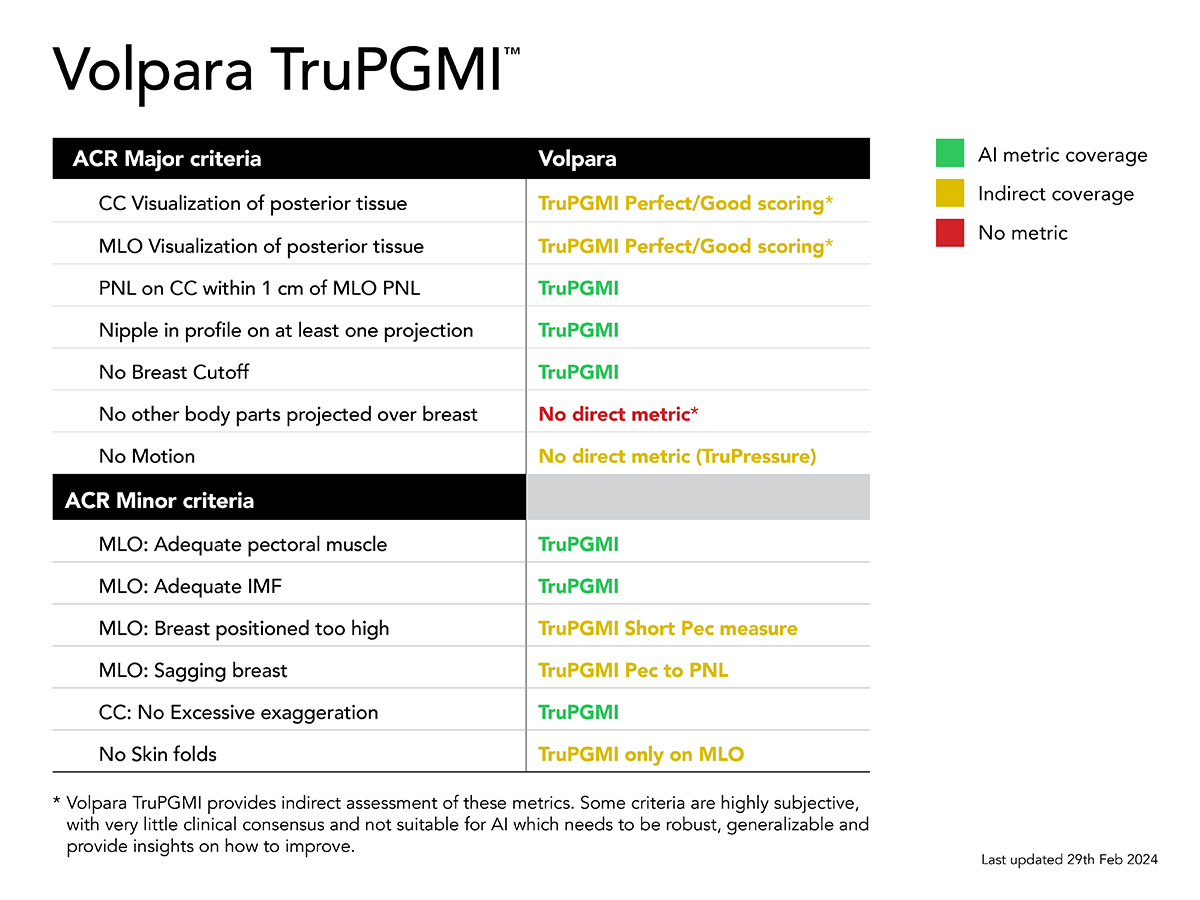Mammography quality is in the spotlight again with some promising initial results from the ACR’s quality improvement initiative. The Mammography Positioning Improvement Collaborative aims to standardize positioning, evaluation, and monitoring to more consistently meet ACR criteria.
Recently, the Collaborative, which includes six participating sites, announced “dramatic gains” for their first cohort’s experience and published in JACR. With a dedicated plan and resources focused on gathering performance data and identifying root causes for inadequate images, the average percentage of screening mammograms that met passing criteria each week increased from 51% to 86%.
This is a commendable start. Mammography quality can and should be systematically measured.
However, the primary challenge remains: manual, labor intensive and subjective approaches are not maintainable or scalable.
Staff shortages are a significant issue in our industry, increasing workloads, demands speed and staff burnout. Two Volpara customers who are members of the first cohort shared two radiologists are reviewing thousands of mammograms against the Collaborative’s metrics.
It’s time to acknowledge that AI can significantly streamline and enhance these efforts and make quality improvement achievable for all mammography providers. AI technology, like Volpara Analytics, removes subjectivity and assess every mammogram produced by a facility against a set of comprehensive metrics. Of the thirteen ACR major and minor criteria, there is only one that Volpara Analytics does not have a direct metric for.

Future Collaborative recommendations should integrate the use of AI. Imagine the quality gains if time and resources are reallocated from collection and evaluation to fostering staff engagement and training.
Outside of the Collaborative, imaging facilities should be encouraged to invest in technology that supports an ongoing culture of quality improvement. Studies by Eby et al1 and Gennaro, et al2 have demonstrated how AI is available now that can streamline these efforts and enhance outcomes, and should be adopted in daily mammography practice.
Let’s embrace the future and advocate for AI in mammography quality for the advancement of our profession and better care for our patients.

